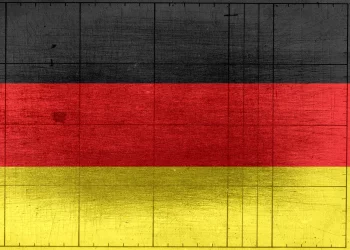
During the preparation for the GMAT, especially at the beginning, you may find yourself frustrated that, despite all the practice tests you have taken, your score just can’t breach the 600-point threshold. Rest assured, with patience and perseverance you will get there. In addition, you can find solace in the fact that most of the GMAT test takers around the world achieve scores that are below 600.
Tops and flops
There are only five nationalities that achieved average GMAT scores above 600 in 2016, according to the GMAT Testing by Citizenship 2012-2016 report released by GMAC, the organisation that administers the exam. Bermuda topped the list with the whopping 639 points. However, we have to note the fact that only seven tests were taken in the country last year. The other countries that achieved average scores above 600 are New Zealand (624), Singapore (615), Australia (612), and Argentina (607). Several other countries, such as the United Kingdom (598), Belgium (596), and Poland (595) came close.
The report summarises five-year global GMAT testing trends by region and country of citizenship. It offers a five-year demographic snapshot of the prospective applicant pool for graduate management programmes around the world, based on candidate citizenship. It features GMAT exam and score-reporting data based on the region and country of citizenship.
But enough about the high-scores. In case you are wondering what the average scores are at the bottom of the table, you will find results such as 299, 236, and 264. The minimum score on the GMAT is 200.
GMAT around the world
Globally, nearly 1.3 million GMAT exams have been taken over the past five years by those who are interested in pursuing graduate business and management education. A total of 261,248 tests were delivered to prospective business school students around the world in testing year 2016, which ran from 1 July, 2015 through 30 June, 2016, compared with 286,529 exams in the testing year 2012. It has to be noted, however, that the GMAT exam volume was artificially elevated in testing year 2012 when many examinees rushed to sit for the exam before the addition of the Integrated Reasoning section in June of that year.
Check out: How to Prepare for GMAT – Essential Guide
The US
The United States, which is among the largest GMAT markets along with India and China, has been witnessing a decline in the number of exams taken. Last year, 83,410 tests were sat for, a significant decrease from 117,511 in 2012. The average score, however, rose to 547 in 2016 from 533 in 2012. About 78% of all score reports were sent to MBA programmes.
India
In contrast, more people are sitting for the GMAT in India. A total of 33,123 tests were taken in testing year 2016, up from 30,213 in 2012. The average score, however, dropped to 577 from 582. The number of exams taken by women in India rose to 9,964 in 2016 from 7,812 in 2012. The number of exams taken by men in the country also increased, although less impressively. Over 80% of all score reports were sent to MBA programmes in 2016.
The UK
While the number of exams taken by men fell to 1,174 in 2016 from 1,323 in 2012, the number of tests sat by women rose to 510 in 2016 from 423 in 2012. The average score advanced to 598 from 587. Nearly 80% of all scores were sent to MBA programmes in 2016. The average age of the GMAT test takers fell to 27.5 from 28.2.
Brazil
Brazil is one of those markets where both the scores and the exams taken are increasing. Scores rose to 584 in 2016 vs 556 in 2012, while the number of exams soared to 2,592 in 2016 from 1,797 in 2012. The number of tests taken by women rose to 751 from 543 and the number of tests taken by men jumped to 1,841 from 1,254. Score reports were sent mainly to MBA programmes last year.
Canada
Excluding the inflated 2012 figures, the number of women has been increasing since 2013 to reach 2,635 in 2016. The average GMAT score in Canada rose to 574 in 2016 from 566 in 2012. As a whole, however, there were fewer tests taken in 2016 (6,641) than in 2012 (7,820).
Russia
Much like in Canada, the number of GMAT test takers in Russia is falling. 2,353 tests were sat for in 2012 compared with 1,846 in 2016. The average score, however, is up -- 557 in 2012 versus 572 in 2016. About 48.8% of the scores were sent to MBA programmes and 47% to non-MBA Masters programmes in 2016.
Global GMAT trends
- More women GMAT test takers
The breakdown of the data reveals that more and more women are taking the test. Their number rose to 118,027 in 2016 from 101,336 in 2013. The number of male GMAT test takers increased to 143,208 in 2016 from 137,020 in 2013. In some regions such as East and Southeast Asia, more women are sitting for the GMAT exam than men.
- GMAT for MBA vs. Master’s programmes
A total of 561,866 score reports were sent to graduate-level management programmes worldwide in testing year 2016. About 65% of the scores were sent to MBA programmes, 32.1% to non-MBA Master’s programmes, and 2.9% to Doctoral or other degrees.
Check out: Why Take the GMAT Exam? (Video)
In terms of score reports sent to graduate-level management programmes, nearly 72% score reports sent by men went to MBA programmes in 2016, compared with 54.9% of reports sent by women. Women were more interested than men in applying to non-MBA Master’s programmes.
- Professionals take the GMAT earlier
The average age among GMAT test takers is steadily falling. In 2012, the average age of the participants was 26.1, compared with 25.6 in 2016. At the same time, scores have climbed to 558 in 2016 from 548 in 2012.
Scoring above 600 on the GMAT is no mean feat. If it was easy, there would be more than five nationalities boasting average scores above that threshold. However, if you apply yourself and don’t give up, you will discover that you add more points to your score with each new GMAT practice test you take.


Comments